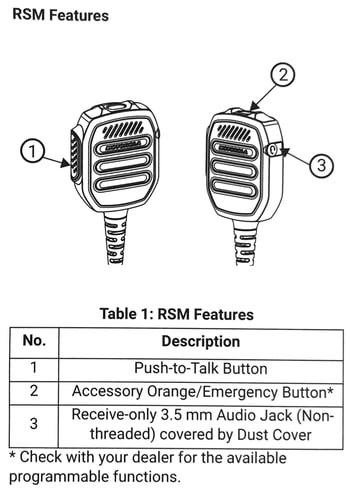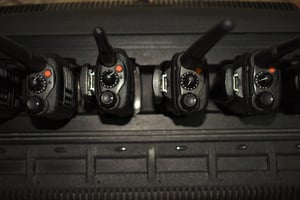When every second counts—whether in public safety, education, construction, or logistics—your...
Understanding the Parts of a Two-Way Radio
Understanding the Key Parts of a Two-Way Radio: A Guide by DSC Communication
Two-way radios remain an essential communication tool across industries like public safety, construction, transportation, healthcare, and utilities. But how exactly do they work, and what components make up a two-way radio system?
In this guide, DSC Communication breaks down the main parts of a two-way radio, helping businesses and organizations better understand how these powerful devices operate. Whether you're upgrading your radio fleet or training your team, knowing the anatomy of a radio can improve usability and maintenance.
What Is a Two-Way Radio?
A two-way radio is a communication device that can transmit and receive audio signals. Unlike cell phones, two-way radios operate on radio frequencies and allow instant communication, ideal for mission-critical situations.
Main Components of a Two-Way Radio
1. Antenna
The antenna is responsible for transmitting and receiving radio signals. A high-quality radio antenna ensures better range and clearer communication. Most handheld radios use flexible whip antennas, while base stations use larger fixed antennas for extended range. (two-way radio antenna)
2. Push-to-Talk (PTT) Button
The PTT button activates the transmitter. When pressed, it allows the user to speak, and when released, the radio switches back to receiving mode. This simple piece is key to the instant communication that two-way radios provide. (push-to-talk communication)
3. Microphone (mic)
The built-in or external microphone captures your voice and sends it through the radio waves to the receiving unit. High-end radios may include noise-canceling microphones for use in loud environments. (two-way radio microphone)
4. Speaker
The speaker outputs the audio received from another radio. In mission-critical communications, clear and reliable audio is essential. Some radios also support external speakers for vehicle or base station use. (two-way radio speaker)
5. Battery Pack
Two-way radios are powered by rechargeable batteries, usually lithium-ion or nickel-metal hydride. Battery life can vary based on use, so having extra packs or fast-charging options can ensure uninterrupted communication. (two-way radio battery life)
6. Display Screen (if applicable)
Digital radios often include an LCD screen to display channels, battery status, signal strength, and caller ID. This feature enhances usability, especially in multi-channel radio systems. (digital two-way radio display)
7. Channel Selector
Radios operate on specific radio frequencies or channels. The channel knob or button lets users switch between different talk groups, which is useful in large teams or multi-department operations. (radio channel selector)
8. Volume Control
The volume knob adjusts how loud incoming transmissions are played. This is especially important in noisy work environments or for users wearing headsets. (two-way radio volume control)
9. Accessory Port
This port connects external accessories like headsets, speaker microphones, or programming cables. These tools can greatly expand the functionality of your device. (Radio accessories for communication)
Below are infographics of a portable radio (BPR 50dX) and a mic (RSM- Remote Speaker Microphone): 

Bonus: Internal Components
-
Transmitter & Receiver Module – Converts audio to radio signals and vice versa.
-
Circuit Board – The brain of the radio; controls signal processing and communication functions.
-
Housing/Chassis – Durable casing to withstand drops, dust, and water.
Why Knowing the Parts of a Two-Way Radio Matters
Understanding the key parts of your radio helps with:
• Faster troubleshooting
• Better user training
• Efficient radio maintenance
• Improved ROI on communication equipment
At DSC Communication, we specialize in providing reliable, rugged, and customizable two-way radio systems for commercial and public safety organizations. Our experts can help you select the right models, accessories, and maintenance plans to fit your operational needs.
Get in Touch with DSC Communication
Need help choosing the right two-way radios or accessories? Contact DSC Communication today for expert advice and custom solutions tailored to your industry.




